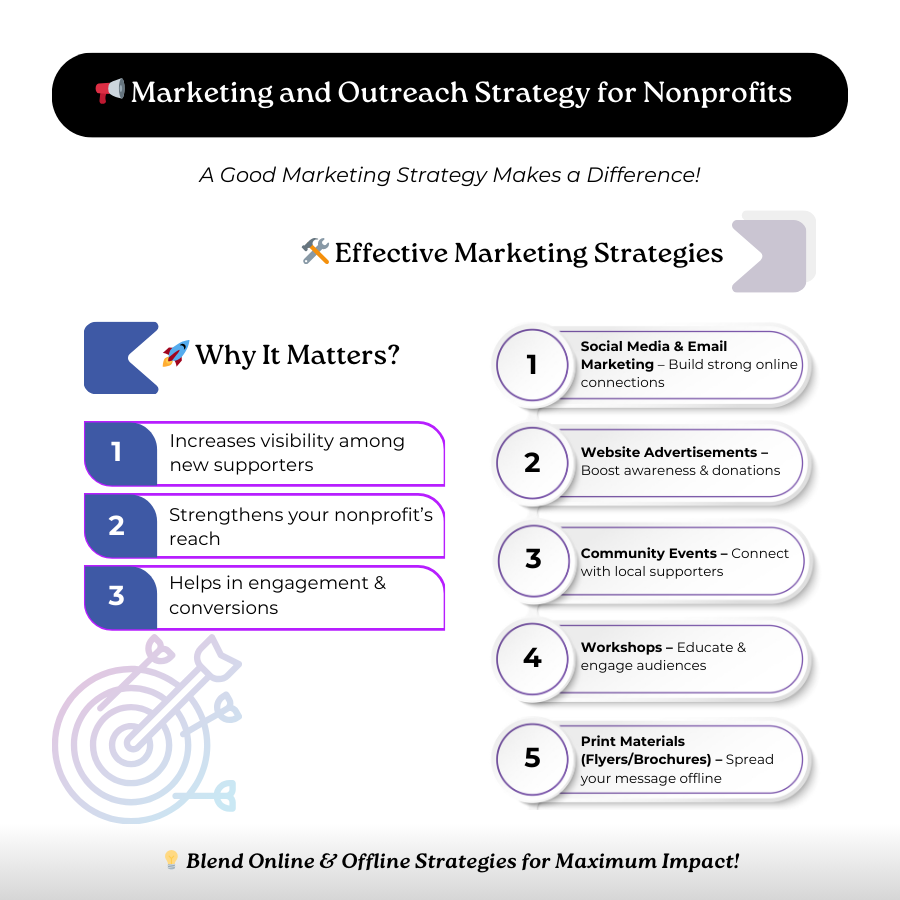How to Write a Nonprofit Business Plan
Introduction
A nonprofit business plan is an essential document in the management of an organization working to fulfill a social mission. Unlike profitable entities, nonprofit organizations focus much on creating positive effects in society rather than making profit. Here are some of the reasons why a non profit business plan is essential:
- A good nonprofit business plan format is the roadmap that guides the activities of your nonprofit.
- It ensures the understanding of the objective while keeping the financial status in order.
- It provides direction and serves to clarify the mission of the organization to your stakeholders, including donors, partners, and community.
- It also offers you quantitative measures of success or failure and helps in adjusting the strategy as needed.
In this article we will understand the essentials needed to write a business plan for nonprofits. We can deliver better readability through AI tools such as Grammarly while managing our productivity track using apps like Notion.
Nonprofit Business’ Mission and Vision
The importance of having a mission and vision
The mission and vision are the heart of a nonprofit business plan. A mission statement outlines the purpose, values, and overall direction for a nonprofit whereas a vision expresses long-term aspirations. For any organization, a mission acts as a guiding principle for making decisions and taking actions.
Clarity of a Mission
The mission must be defined in such a way that it is specific and connected with the ethics and goals of an organization. For example, the failure of Crystal Pepsi teaches us that deviating from core values (in this case, retaining the black color) can expose the business to problems. Nonprofits must align themselves with their mission so that neither they lose supporters nor they lose focus.
Sustainability of a Vision
Another essential aspect is sustainability. Nonprofits must work to strategize expansion opportunities for growth. These might include entry into new markets, partnerships, or adding a business-to-business (B2B) or business-to-government (B2G) revenue source. Sustainability over time allows for the continuation of the work.
Organizational Structure
A nonprofit business works efficiently and properly when a structure is introduced. It is very important to segregate the members of a nonprofit into numerous sections and departments as needed (For Example: Marketing Department, Finance Department, Strategy Team, etc.). In this way, multiple teams can work together in order to bring the ultimate mission to a success.
Segregation of employees
An effective nonprofit business plan format depends on having a clear organizational structure.
- It clearly defines the roles and responsibilities of every staff member, volunteer, or board member.
- It consists of various departments: administrative, program management, marketing, and fundraising, each having their own functionalities.
- These multiple departments collectively work towards achieving a single mission.
Legal Terms are important
Besides the general rules, the company should also be clean in legal terms. The legal framework of a nonprofit should include:
- Compliance rules– A set of laws, guidelines, standards, and ethical principles that a company or organization must adhere to
- Maintaining tax-exempt status- A status which releases the federal corporate income tax on income generated from activities related to the business’ mission.
Therefore, before organizing the nonprofits, it is advisable to consult the experts so that your rules and policies comply with the necessary laws.
Segregation of employees
The mission must be defined in such a way that it is specific and connected with the ethics and goals of an organization. For example, the failure of Crystal Pepsi teaches us that deviating from core values (in this case, retaining the black color) can expose the business to problems. Nonprofits must align themselves with their mission so that neither they lose supporters nor they lose focus.
The leaders hold the main job
- The leadership team plays a huge role in terms of the success or failure of the organization.
- Executive Director and board of directors lead the non profit.
Defining all the people’s responsibilities clearly brings accountability and makes the organization work as one unit towards its mission.

Market Research and Analysis
The right way to conduct Market Analysis
For the proper conduct of market research,
- You need to establish the requirements which your company needs to respond to.
- Break a broad problem into smaller, more workable pieces.
- Research each piece in more detail.
Example of conducting research
A nonprofit organization that aims at education and can conduct research on topics such as literacy programs or access to technology for less privileged students.
Case Study on understanding the audience
Understanding your target audience is also of equal importance. Notice how BMW would not attempt to reach the shampoo consumer. This is because their targeted audience revolves around automobile enthusiasts. A nonprofit business plan must make sure that the business’ services are relevant to their target audience. It aids in identifying the right audience for your programs and services.
Significance of Market Analysis
Market or competitor analysis is an important part of a nonprofit business plan. Knowing what other nonprofits in your field are doing, you will be able to identify the USP for your organization.
What is a USP?
A USP (Unique Selling Proposition) is the uniqueness that your business holds amongst the other competitors. According to the U.S. Small Business Administration, having a uniqueness in your product gives a competitive advantage over others. Something as simple as “made from recycled waste” can be your USP.
These analyses will help you to identify strengths and weaknesses in your nonprofit. They also help you to work on areas of risks that could come along with those weaknesses.
Programs and Services
Serve the community, follow the mission
At the core of every nonprofit organization is its programs and services. These should be based on the mission and oriented towards fulfilling the needs of the community.
Case Study of Back on My Feet
Back on My Feet is a non-profit that helps people experiencing homelessness. The program works by organizing running groups. Each group must commit to running three times a week with volunteers. Participants gain physical and mental strength, and over time, they also receive job training, housing resources, and help with employment.
This approach helped individuals to improve their circumstances. Back on My Feet now operates in multiple U.S. cities, helping people transition out of homelessness through structured support and practical skills.
Case Study of Coca-Cola
The program needs to produce an effective community impact while enhancing the reputation of the organization. During the design of the program, measurable goals must be set, and success should be tracked. Tools such as Tableau are useful in monitoring real-time program outcomes.
Marketing and Outreach Strategy
A Good marketing strategy makes a difference
A good marketing and outreach campaign comes under business plans for nonprofits.
- They help your nonprofit get greater visibility with new supporters.
- They might be a blend of both online and offline strategies.
- These may include:
- Social Media and Email Marketing
- Website Advertisements
- Community Events
- Workshops
- Print materials like Flyers or Brochures.

Significance of Partnerships
Another good marketing strategy is partnerships. This nonprofit business plan is easy for nonprofits to reach a broader audience and intensify the impact by engaging with other organizations, businesses, or government entities. They can also increase their cause’s awareness by building relationships with local influencers or community leaders.
Speaking
Engagement is equally important and can be done by the following:
- Stay in continuous touch with the donors, volunteers, and partners ensure continued support.
- Show appreciation of contributions.
- Keep stakeholders informed of the progress
These steps make the public relationships stronger and more loyal.
Financial Plan, Budget, and Fundraising
Finances play a crucial role in running a non-profit business. These act as a fuel to run the business and is therefore important to look out for the sources of income. Some common sources of finance include:
- Donations and Grants: These are funds given to a business by the government or by an organization in order to achieve the business’ goals.
- Crowdfunding: It is a step taken by the business to gather a small amount of money from a large group of people.
- Corporate sponsorships: It is a mode in which a company or an organization pays money to stay associated with the business.
And many more.
Income is important for Nonprofits
Any nonprofit organization requires financial sustainability for long-term success. A nonprofit business plan should have enough paths to generate income and manage its expenses.
Expenses must be made with proper calculations
Besides income, expenditures should be well planned because it includes proper use of funds. These expenses generally include:
- Operating costs: Such as salaries of the staff, program expenses
- Overhead costs: Costs related to administration
One useful approach to financial planning is to save before spending. This keeps the organization running in bad times too. Imply formulae like Income – Savings = Expenditures.
Raising funds is a key part
Fundraising is an integral part of any financial plan. In most cases, nonprofits focus on creating campaigns which help in raising funds and grants. As witnessed by the success of The Trevor Project-a nonprofit that specializes in the welfare of LGBTQ youth, we can understand the power of campaigns. Therefore, by developing a proper financial plan, nonprofits are sure to perpetually grow and improve their programs.
Conclusion
- A well-structured nonprofit business plan provides a clear roadmap.
- It ensures financial stability, and is operationally efficient.
- Understanding the mission and vision, organizational structure, market research, program development, and financial planning will help the non profit to avoid challenges and can maximize their impact.
- The nonprofit business plan needs to be reviewed and updated. This allows organizations to stay prepared for new opportunities or challenges that might emerge.
In this manner, nonprofits may make long-lasting contributions while following their own mission.
CIMAC Marketing
CIMAC lies among the top-ranked digital marketing companies in the International market. We have a team of expert professionals who understand your marketing needs and use social media platforms and websites to promote your products and services such that you reach a huge number of clients in the most convenient way.
Contact Our Live HELPLINE
Organic Search: Definition, Comparison with Paid Search.
You must have seen marketers going crazy over organic search. Have you ever wondered what is it? Why do business owners work so hard to boost their organic search? In this article, we will ensure that you get answers to every query about organic search.
Let’s get started.
What is Organic Search?
Organic search refers to the search results of a search engine without the influence of paid ads. In other words, organic search results are the unpaid results that a search engine shows after a query. These search results are ranked on the SERPs as per their relevance to the search query.
Marketers around the world are constantly planning out strategies to boost their organic traffic. The term “organic traffic” is used for the traffic that lands on your page, looking for an answer to their queries.
However, there is another strategy that marketers use apart from organic search. It is called “paid search”. Are you familiar with this term? Even if you are not, you must be familiar with the ads that appear on any search result page.
The ads that you see on Google, Bing, Yahoo, or even on YouTube are known as paid ads. These ads are primarily used to target ready-to-buy customers.
Organic Search V/S Paid Search

| Advantages of Organic Search | Advantages of Paid Search |
|
|
|
|
|
|
|
|
|
|
|
|
Some Benefits of Organic Search:
Zero expense:
Unlike paid search, organic research needs zero expense. In simple words, you won’t have to spend your monthly budget on ads. However, you need to invest time to see the results. In other words, you will need time to research the market, select your target audience, build a strategy and create the content. However, you can make the work easier by hiring an SEO agency. Their expert SEO professionals can get you the organic traffic you want, while you relax at home.
Generates a remarkable ROI:
Just like other business owners, your goal is also about generating an impressive ROI. Whether you rely on organic search or paid search, you can’t forget about ROI. When you optimize your website to get a better ranking on the SERPs, you will obviously generate organic traffic. More organic traffic on your page will only result in boosting your ROI earned. In other words, you will be earning a remarkable ROI without spending a penny.
Increases credibility:
Organic search will let you have a good impression on your clients. For example, anyone is looking for a frying pan and your company appears as the first SERP. Then the person will surely find you trustable. Also, when your company shows up in several SERPs, your potential customers start to recognize your brand. Thus, organic results can boost your credibility.
Targets relevant customers:
Well, both organic search and paid search can bring traffic to your website. However, natural searches are effective in targeting the most relevant traffic. Moreover, organic search lets you target a number of searches without spending a penny. In other words, your company becomes more visible online whenever there’s a query related to your product/service.
Newsletter: Definition, Purpose & Procedure

Message to Sign Up for Newsletters
Are you an e-commerce marketer who has not yet used the newsletters to promote your business? Then you must not be aware of newsletters and their usefulness. In short, it is a tool of Email marketing that is used to generate leads at very low expenses, if done correctly.
It gives you the pleasure of staying in touch with the customers without constantly bothering them with uninterested topics. It is the most used strategy by the Email marketing departments.
Now let’s dive into the broader explanation of newsletters.
What is a Newsletter?
An email newsletter is an email sent by a person or a business periodically that contains news, updates, and curated content on the subjects they have signed up for.
Marketing through newsletters is a strategy that many companies are using to send informative and product-focused content via newsletters to the customers who have signed up for them. E-commerce businesses have utilized this cost-effective and easy-to-use strategy to remain in the mind of the visitors.
What is the Purpose of Using Newsletters?
Newsletters can prove to be the best option for you if you have an e-commerce platform, website, or blog to promote your products, content, update about an event, or retarget customers who have abandoned their carts.
The purpose of an email newsletter is to keep the customers updated with the business’s whereabouts. They are used to motivate them to take action, like making a purchase or viewing their latest blog.
You must use other campaigning strategies other than newsletters to advertise your products/services. Newsletters can become the life of your marketing campaigns if used properly. Studies have shown that email marketing has proven to be more successful than social media marketing in the past decade.
Do you have an email id?
I suppose, yes.
Most of us are internet users and so we surely have at least one email id. That is the reason for success in the email marketing strategy.
According to the Fourth Source website, 92% of internet users have at least one email id. It implies that you can even reach up to the prospects who don’t have social media accounts, where it can be difficult and also decreases the coverage of the desired segment.
How to Use Newsletters for More Engagements?
Engaging leads through email marketing is not easy. For successfully engaging leads, you have to keep your customers at the core of all your efforts.
Newsletters that provide a great experience of surprise and delight to the customers, help you build a reputation for providing the best content for the customers. Then customers might look forward to the high-level relevant content from your end.
Whether you are a major corporation or a small enterprise, providing a fantastic, personalized experience to every one of your brand’s followers is key to growth, customer retention, and creating lifelong brand advocates.
But even so, some of your subscribers will still become less engaged over time. Maybe they are no longer in the market or maybe they are too busy to note you. Or maybe their interests have shifted and what once resonated with them doesn’t anymore.
At this point, you need to retarget these contacts and either bring them back into the fold or let them go. Doing so means you send to the subscribers who have the greatest chance of converting, keeping your list healthy.
Is Your Content Not Getting Noticed? Try These Amazing Tricks
Amazing Tricks for Content Marketing
“Content is King” – this is the most heard tagline of today and this is the reason everyone is running after content marketing. Recently, the market for content has seen a growth of about 16% from the year 2017 to 2018.
So, you have also started a site of your own but somehow your contents are not attracting the right amount of traffic? There must be somewhere that you are going wrong. How do you know that? Well, here are some of the common mistakes that should not be done. You can correct them to make your content more noticeable. These tricks for content marketing can make your visitors increase by about 40% than the original.

Is Your Content Not Getting Noticed?
The Content Strategy: Planning up your content marketing calendar
There are so many people who think that they can post blogs or the contents at their convenience. This is a very common fault that steals away the attention of the viewers from your content.
To get a good amount of attention, you should have a proper content marketing strategy planned. You need to create a time schedule for posting the contents. This is the best trick for content marketing. This provides a larger area of vision and day-to-day accuracy to maintain quality.
Never post content randomly. This is once again a great mistake. If you do not target one particular stratum of the audience, you will not be able to gain attention.

The Content Strategy: Planning up your content marketing calendar







